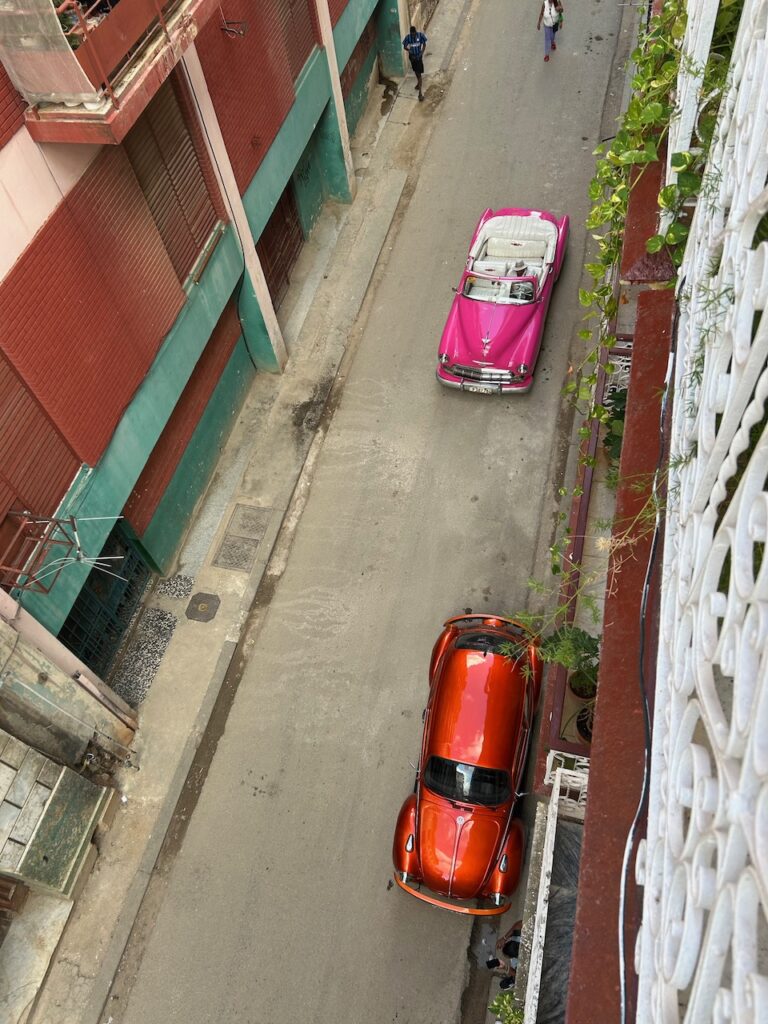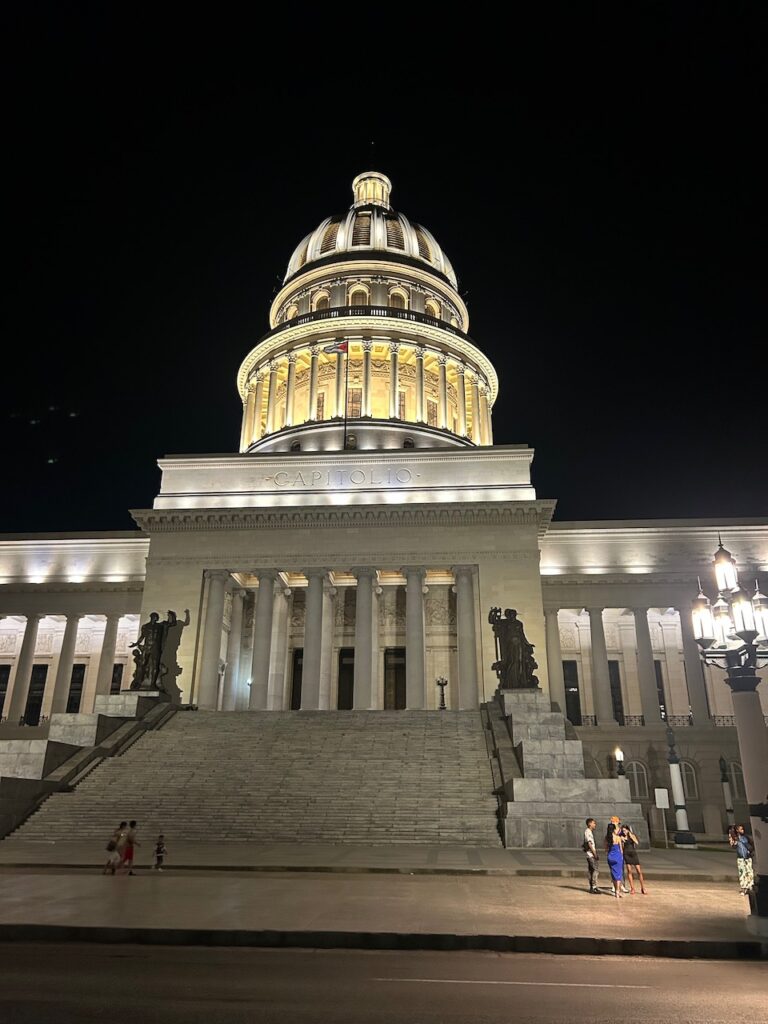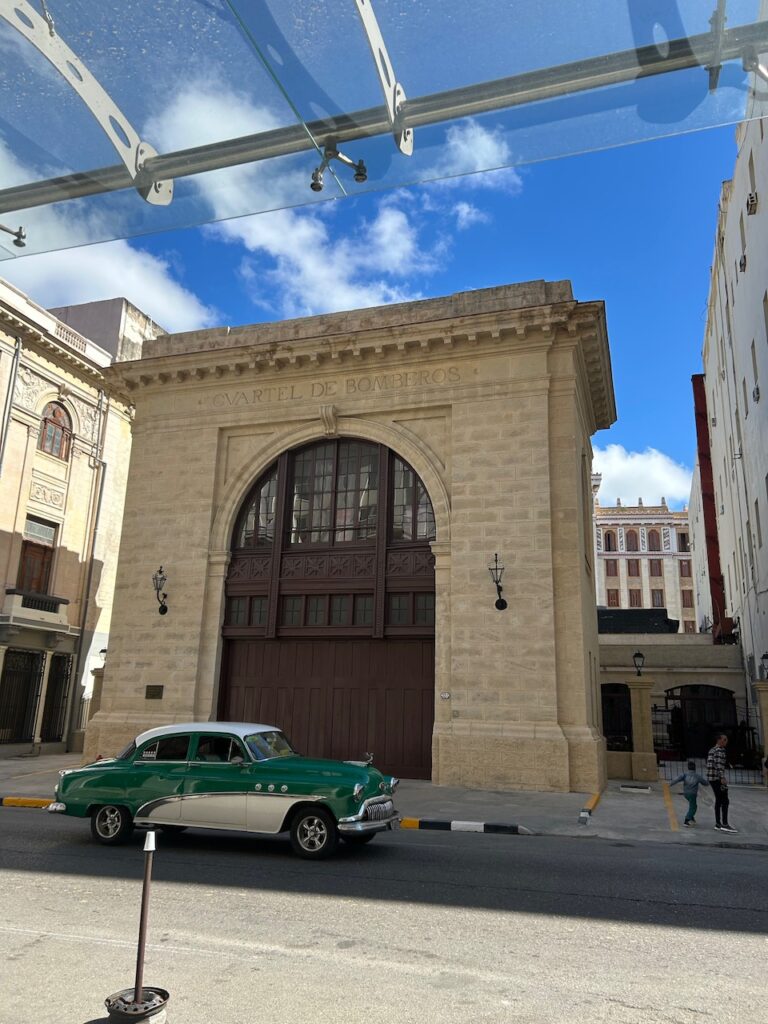Habana Vieja
After the year we’ve just experienced, I had every intention of sitting around quietly over Thanksgiving and experiencing as much nothing as possible.
But a friend of mine offered me an opportunity to join him and another middle aged traveling lad on a 5-day trip to Havana, Cuba.
On an whim that is uncharacteristic of my standard issue risk avoidance, I chose to go.
We flew red eye to Miami followed by a short hop to Havana. My only computer was the small one we commonly refer to as “phone”, which could only connect to the internet when I was in my historic AirBnB, itself hidden on a dilapidated street in Old Havana.
That, in and of itself, was a freedom that I could only taste ironically in a place like Havana.
The trip gave me an opportunity to reflect on where we are in the United States, through the lens of a country that has been gripped by authoritarianism since the 1950s –both from the Batista regime, and from Fidel Castro’s excessively long stay in power.
Havana is a case study in deferred maintenance. The stunning and ornate buildings, which line street after bustling street across historic Havana were in varying stages of decomposition, most of which were built in the middle of the 19th Century. Now and again, I saw second floor balconies being held up by straining wooden stilts, resting on the narrow sidewalk below. Others had trees growing out of their roofs or bushes that had established commanding beachheads half way up the edifices of cracking buildings.
I thought of my historic preservation friends here in Phoenix would certainly weep for days at the traumatic carnage, undoubtedly only to rally their strength and fight to save the lives of these grand old ladies.
To be fair, an impressive number of buildings around the Plaza Vieja have been beautifully renovated, though most still sit empty.
The phrase “two things can be true at once” rang in my head through the entire trip.
It is true that Fidel Castro simply replaced one repressive regime with another, which served only to stifle opportunity and maintain a hopeless dragging poverty over decades, despite its stated intentions of freeing the poor from the shackles of the rich.
It is also true, however, that the United States played a terrifying role in this tragedy. Rather than recognize the injustice of the Batista regime, the US supported the conditions in which a person like Castro could come to power.
As I walked around its streets I could see how Cuba’s historical lessons have echoed through these many decades. If you are quiet you can hear them bouncing around our current political malaise in the US. We should not ignore the similarity between the destabilizing excesses of the Batista regime and the democracy-threatening excesses of our current wealth disparity in the United States. Both resulted in foundational change in each country.
After all, it was the Gilded Age that led to the rise of communists and anarchists in America. The Batista regime lead to the rise of Castro. From the perspective of a person who loves representative democracy, I don’t see a distinction between communist authoritarianism, and any other kind of authoritarianism. Both delete freedom and increase poverty.
However, the Gilded Age also lead to the rise of the Progressives who’s reforms we still live by today. As such, we see a historical example of one country that fell to authoritarianism in the form of communisms following the overthrow of a repressive regime where the other moved toward progressive reform as a response to oligarchy, dodging the bullet of violent revolution.
My graduate study was in US foreign policy. The US-Cuban relationship was central to how we understood recent applications of the Monroe Doctrine. We were taught that the US was trying to stem the tide of communism near its borders.
But it was also apparent that the US acted like a spurned lover after the fall of Batista. Cuba was a playground for the American wealthy classes. Familiar yet distant to it’s visitors. Having been founded in the same era as our proud capitol, its architecture and streets were a familiar but sunny playground.
Unfortunately, that playground was fundamentally unjust to anyone not connected, with money or who toiled for a living. So in 1959 our lady Cuba walked out on an abusive relationship and her lover would never admit its role in the abuse. Then she walked in to the arms of another abuser.
Despite multiple opportunities over the last 70 years to open relations in ways that our allies in Canada, Mexico and Europe had, the US chose to isolate Cuba. Not until the Obama administration did we begin to open relations, 20 years after the fall of communism.
Certainly, it is reductive to ignore the legitimate grievances that the Cuban diaspora in Florida have with Castro’s Cuba. However, as my trip showed me, it is also short-sighted to ignore the reformative power that opening trade can have on a closed regime.
The European, Canadian and Mexican tourists who visit the city, after all, can only do so much to leverage their dollars, pesos and euros to encourage reforms in the Cuban government. Only a powerful wave of US investment, only 90 miles to the north, could have a meaningful effect.
That is why, after all, former Arizona Senator Jeff Flake fought to open relations with Cuba. Number 47’s pick as Secretary of State, Marco Rubio, however is poised to continue the old rifts –possibly even reverting to past closures.
But Rubio seems to be a scripted actor in a telenovela plot that has been passed down through two generations. But that script does not acknowledge the opportunity we have. It is possible to leverage the trade that Cuba needs against incremental and positive changes to Cuban policy.
Still, as I bought a Banksy-inspired illustration from a street artist, with its own subversive message, I knew that we need to protect Cubans from America’s worst habits if we hope to foster long-term stability.
The United States is in a particularly gruesome era of wealth inequality. Naturally, I hope this era will end the corrupt dealings of the corporate and religious right and will guide us to an era of federal and state reforms the reflect the best features of the Progressive Era in the US.
However, given our current struggle in our country, is this even a good time to flood Cuba with American misguided corporatism, strip malls and disregard for dense historic infrastructure? I am certain that this coming administration would, if given the chance, replicate the failed “shock therapy” approach that the US applied to Eastern Europe –and which only served to empower corruption, organized crime and oligarchs there.
With arrogance, the US would impose its failed health care and education systems on Cuba, which has universal (but faulty) health care and 99% literacy.
In pursuit of dollars for billionaires, the US would destroy habitat to install resorts where US visitors would never really learn about the country they are visiting.
We would see a short term rental industry that would certainly repair many structures, at least superficially, but which would displace thousands in the process. We know this because we see it at home.
As such, I’m conflicted. I saw desperately poor people and I know that they could have more opportunities and more stability through an era of détente. There are others whom I saw working the system in ways that could certainly propel them to fabulous wealth if more money ever floods the local economy.
How do we could protect people, their culture or their pride from the worst excesses of American greed while still helping them find the freedoms that they deserve?
The process would be as delicate as buttressing a sagging balcony full of tourists over a narrow Havana street lined with children.
But I left Havana feeling that it is worth a try. I reject the notion that the US has no role to play in Cuba’s future. We are too closely tied, even if our love affair is at a nadir.
After all, this old lady deserves to wear her finest again.









